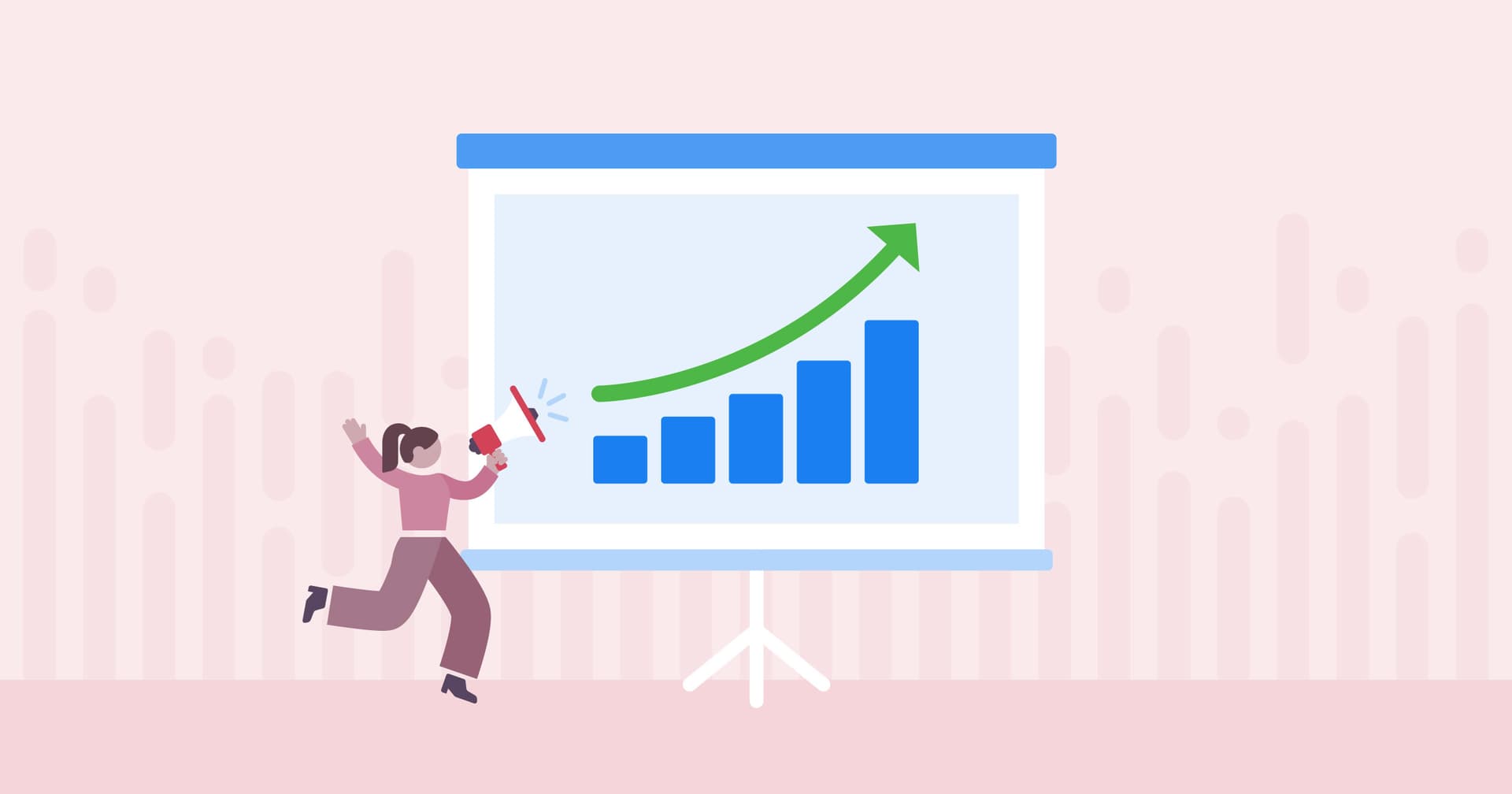Table of Contents
QUICK SUMMARY:
Call tracking apps and software tools connect marketing efforts with customer actions, assigning unique numbers to different campaigns to track the origin of phone calls. The best call tracking apps help marketers analyze call data from marketing campaigns, providing insights into customer engagement and the success of marketing strategies. This guide explores the top call tracking apps, aiding in strategy optimization, conversion enhancement, and ROI maximization.
Cracking the code of digital marketing often feels like trying to catch a handful of smoke. In this elusive world, call tracking emerges as a beacon of clarity, casting light on the paths customers tread before they pick up the phone. But what exactly is call tracking, and how does it operate in the grand scheme of digital marketing?
Let's take a moment to picture a world where every marketing dollar makes an impact. As an account manager overseeing numerous clients, this ideal scenario probably sounds like a far-fetched fantasy. Yet, this is where the magic of call tracking apps steps into the limelight.
For our clients, it's almost 100% focused on the number of calls we're able to generate. Our clients stick with us as long as we're able to generate leads via phone calls, so we pay close attention to that.
Ryan Burch, Managing Partner, Tobie Group
Call tracking is not simply about recording calls or managing call data; it's about mining the golden nuggets of call metrics and providing insights into the digital journey of every customer who dials a client's number.
Think of it this way: Every phone call is a breadcrumb on the path to understanding the effectiveness of your client's marketing strategy. Call tracking picks up these breadcrumbs and lays out a comprehensive trail, providing closed-loop attribution between marketing efforts and end results.
Calls seem to be the most important metric to a lot of our clients. I feel it's a thermometer for how busy it feels to the owner on site. The more calls coming, the more business feels busy.
Kira Krostag, CEO / Founder, Site Smart Marketing
They don't just tell where the call came from; they unveil how the marketing spend on channels like Google Ads plays a role in triggering those calls.
Suddenly, every conversation in a call center takes on a new dimension. Behind each call lies a wealth of call metrics that serve as a guiding light for making marketing decisions. By dissecting these metrics, marketers are not just making informed choices, they are actively aligning their marketing strategy with their business goals.
Stay tuned as we delve deeper into this exciting world where track calls meet marketing insights, and where every phone call becomes a step towards achieving business goals. Because in this world, every ring brings your client closer to the sound of success.
What Is Call Tracking and How Does It Work?
Call tracking is a technology that bridges the gap between marketing efforts and customer actions. In its simplest form, call tracking assigns unique telephone numbers to different marketing campaigns. This allows marketers to trace the origins of calls and pinpoint which campaigns encourage potential customers to reach out. Whether it's a captivating Google Ad, an engaging social media post, or an effective landing page, call tracking helps marketers identify where their tactics hit the mark.
The most important thing for our clients is to have the phone ringing and qualified leads coming in. That's why we focus on SEO strategies that drive bottom-of-the-sales-funnel, high-intent search traffic. We don't just aim for increased traffic, but instead, we measure our success by the number of leads and ROI generated for our clients.
Kurt Schell, President, Lithium Marketing
But call tracking goes beyond mere identification. It paints a vivid picture of the full customer journey by collecting first-party data. From the moment a potential customer views an ad to when they dial a number, every touchpoint is recorded. This valuable data is a goldmine for marketers, offering insights that help them understand their audience better, dig deeper into campaign performance, and refine their strategies.
However, the real power of call tracking comes into play when it connects marketing efforts to the contact center. Call tracking software apps turn call centers into high-performing data collection points. Every phone call, every interaction, becomes an opportunity to gather data. This information, when analyzed, provides call agents and sales teams with actionable insights to generate more leads, improve customer interaction, and ultimately increase conversions.
We sell SEO and PPC Services, our clients don't care about how they work, they care about calls and their bottom line. I can show them beautiful numbers, traffic patterns, increase in rankings, etc. But at the end of the day, they're paying us for a service to increase their revenue.
Ruben Roel, President, Investigator Marketing
Lastly, call tracking gives an authoritative answer to one of the most significant questions in marketing: "Is our ad spend driving revenue?" With call tracking, every dollar spent on marketing campaigns is accountable, showing a clear correlation between investment and return. This not only helps prove ROI but also guides future marketing decisions, ensuring that the budget is allocated where it has the most impact.
In summary, call tracking is a crucial tool for marketers seeking a full picture of their campaign performance. It offers the insights needed to drive revenue, refine strategies, and enhance the overall effectiveness of marketing efforts.
Why Your Agency Needs To Start Call Tracking for Your Client
Keeping track of your client's leads is important. Phone calls, after all, are notoriously high-intent actions. There are many lead tracking tools out there, but one lesser-known method is using call tracking software to monitor your client’s calls.
Andrew Doyle SEO & Adwords Specialist at Doyle Digital helped us with a perfect scenario of why you need call tracking and how to convince your client.
Here Is the Scenario, as Presented by Andrew:
I pitched call tracking not too long ago to a bathroom renovation client.
While he understood that call tracking could be useful… he thought it would be something to think about when we start running the SEO and Facebook Ads later down the track.
At least he’ll understand that any leads he gets for the time being are from AdWords – right?
So I call him up a few days into the campaign
Andrew: 'Just wanted to see if you have seen an increase in calls?'
Client: 'Yeah, there’s definitely been an increase in calls and they’re all coming from the right areas we talked about but I don’t know if that’s really from the AdWords, or people just looking for me directly or maybe even my SEO?'
(…he didn’t rank for anything)
Andrew: 'Are you asking your customers how they found you?'
Client: 'Yeah I ask ‘em, they tell me the website, but I don’t really want to pester my customers askin’ them like what they searched for and which thingy they clicked'
So here I am clearly producing a decent campaign and because all I have is contact form tracking, this is all I can prove.
Why Andrew Loves Call Tracking Software
1. Its Proven Value
The few campaigns that I do actually have call tracking installed on are an absolute breeze to justify their monthly spending.
The call tracking reports are beautiful with nice, chunky conversion rates and the cost per conversion looks like something you would actually be happy to pay for a genuine business lead.
You can show exactly which medium (SEO, AdWords, Facebook, etc.) is getting the conversions too which is super important when your client has you battling it out with another provider.
But most of all, it’s important for the client to know which avenue is working for them each time they throw money down that seemingly dark marketing hole.
Businesses are understandably looking at all of their costs with a magnifying glass. If we are unable to prove that we’re driving business at a reasonable cost per lead, they would be crazy to not consider cutting us loose.
2. The Only Metric That Matters
With the right tracking in place, I almost never look at data like pages per session, time on site, or bounce rate these days.
Those metrics do nothing for your client's balance sheet and they do nothing to prove that the campaign is successful.
In reality, you have no idea if someone is actually consuming content or finding it difficult to get what they want. Bouncing or finding what they need immediately, calling the client up and then closing their browser.
Shamefully, back in the day I would often optimize campaigns on user metrics which as it was the best indication I had (combined with contact form tracking). In reality, I could have been damaging those campaigns without even knowing.
3. The Majority of Conversions
Typically, any service-based industry will always have more phone calls than inquiry forms filled out.
You can see below that this dental client has call tracking implemented for each one of his clinics, so we know exactly which clinic is getting the most out of our AdWords campaign which is especially important when bidding on broader keywords like [dentist] or [dentist perth].
And if you’re doing conversion optimization on a website, you want all of that call tracking data to help boost things up to give a true reflection of what your work has delivered over the months.
This pest control client below had the ‘ugly and unnecessary’ changes of adding a phone number and contact form to every single page. Thanks to call tracking apps, I could prove that those changes were well and truly worth the cosmetic sacrifice.
Call tracking is invaluable even for organic traffic.
Even with the dreaded companion (not provided), you can still at least know which landing page leads to a conversion, giving you a clear indication as to which groups of keywords are driving your clients’ business.
3. Push For Success
For both your and your client's sake.
Because honestly, I’m sick of delivering a drum-tight AdWords campaign yet the Goals section of my report looks like this:
When a client like this one has spent $700 in AdWords Media (not including your management fee) and it looks like you’ve only generated a total of 3 leads to the business… then your days managing that campaign are skating on thin ice.
Let’s face it, it wouldn’t be difficult for a competitor to tear my services to shreds based on this if the client felt like sharing his report around.
How Andrew Sets Call Tracking as a Standard
Andrew started to increase his management fee to include call tracking as a standard so it’s no longer an optional extra for clients. "Yes, it makes me look more expensive than my competitors but call tracking helps you produce a better campaign, every time," he says. "It also produces great accountability. This helps both myself in proving my work and the client in justifying my invoices to either themselves or management."
If you ask Andrew, when clients present a price concern, he says that "there are far cheaper options these days than the big companies we’re used to. Some of these providers include CallRail (which has awesome integration with AgencyAnalytics) and TrackMyCalls (an affordable provider for us Australian operators)."
Don’t leave it up to the client to gauge, report, or track the leads at their end because most of the time they won’t. Stand confidently behind your work and let the data speak for your results.
Thank you Andrew for those insights!
How to Use Email Call Tracking in Your Marketing Campaign
Call tracking can be incredibly helpful if you're trying to bridge the gap between online and offline customer behavior, and let's face it, what marketer isn't interested in that?
A Key Performance Indicator (KPI) provides insights that guide strategic decision-making and performance optimization.
With the right tool, call tracking allows entrepreneurs to delve deep into consumer behavior by measuring exactly how many calls were generated by an email campaign, which they can then analyze to determine the number of leads and potential conversions.
So how do you implement call tracking into your email marketing campaign? It's fairly straightforward and simple:
First, you need to create a unique call tracking toll-free number to include in all your emails. This can be done with call tracking software, which will be discussed further in this article. If you're running multiple email campaigns, the toll-free numbers should be different for each campaign.
After the number has been created, you'll need to include it in all the emails created for the campaign. You can do this by inserting it into your email template so that it's present in all emails and will appear to visitors who click through to your website using a link you've provided in the email.
Finally, you'll use call tracking software (see next section) to see exactly how many people have called the number as a result of receiving your email(s). With AgencyAnalytics, you can see what customer behavior stemmed from those calls. Did they help with lead generation? Did any of the new leads convert? The possibilities are endless.
Impress clients and save hours with custom, automated reporting.
Join 7,000+ agencies that create reports in under 30 minutes per client using AgencyAnalytics. Get started for free. No credit card required.
What Is The Best Call Tracking App?
There are numerous apps and software programs available to assist with call tracking. Even Google Analytics 4 can provide call tracking and reports, and we recommend that you pick one and take advantage of all it has to offer.
Thinking about tracking all the data and analyzing the metrics by hand sounds overwhelming, and with a good call tracking app, you don't even need a large budget or a ton of resources to get the desired results. Do your research and decide which call tracker app best meets the needs of your business.
Here are the call tracking tools we recommend, all of which have an AgencyAnalytics integration:
CallRail

CallRail uses customer call recording as one method to determine the types of calls that are being received as well as if those calls are coming from qualified leads.
They also utilize dynamic number insertion to assign unique tracking phone numbers to each online source; the number will be displayed on your website depending on how the consumer came to find your site, and it will tell you exactly where most of your incoming calls are are are generating from. Dynamic number insertion can be used for email campaigns as well.
Finally, CallRail features a Google Ads and Google Analytics integration to make analyzing metrics a breeze. Every time someone calls using the tracking number the call data gets sent directly to Google Analytics, and it appears in your dashboard next to your other marketing data so you can compare all the data from your various marketing campaigns.
CallTrackingMetrics
CallTrackingMetrics uses keyword-level attribution and mobile click-to-call tracking to allow you to optimize your campaigns for ROI. You can use this software to analyze both online and offline campaigns and to determine which keywords are driving calls.
In addition, this software has text message capabilities for anyone looking to integrate text messaging into their call tracking campaign. It also works with form submissions if you want to give your website visitors the option to fill out a form to be connected with a member of your sales team.
What Converts

WhatConverts offers instant call tracking, the ability to track all leads and not just calls, display numbers based on your campaigns, recording, reporting, and a way to identify online and offline channels that generate calls. With a world full of dynamic marketing automation, voice search, and networking happening at every turn, it's a great tool to record calls, with great reviews if you're looking for a total package of software.
Avanser

Avanser is an Asia Pacific call tracking business that is probably one of the most basic on the list but works great for small businesses with a smaller budget. You still have all online tracking using dynamic numbers to maximize your ROI, instant missed call notifications, and more. Some of the biggest name brands in the Pacific use this software, so if you're thinking of going international, this one's for you.
Marchex

Marchex is another international call tracking company, but unlike the others, call tracking is just a small part of what the company has to offer. Omnichannel, speech, leads, marketplace – you name it and they'll have the data for you. (Shameless plug: If you choose this software, AgencyAnalytics will come in handy for organization and analysis!).
CallSource
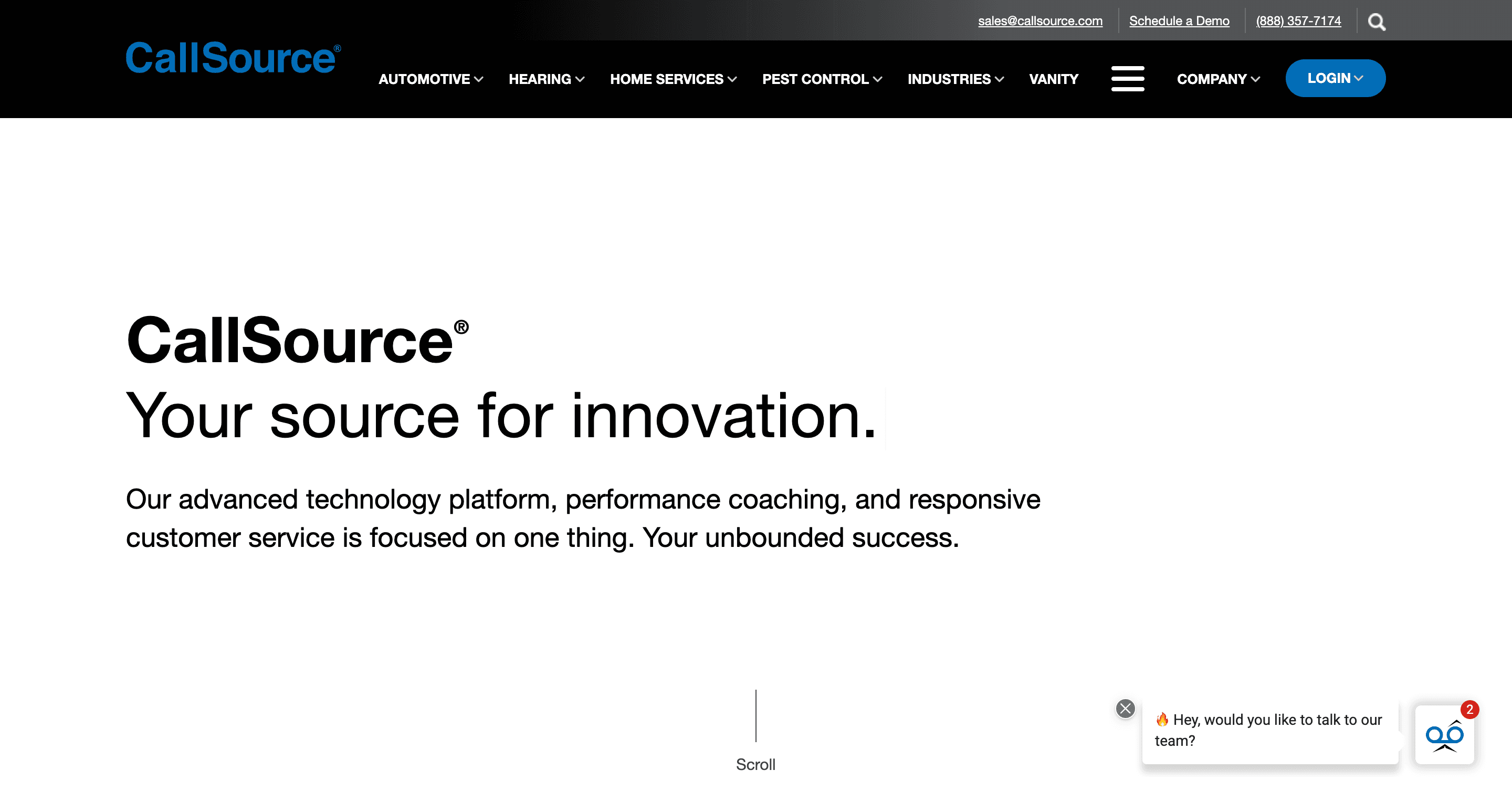
CallSource is a call tracking and analytics company that provides businesses with data-driven insights to improve their marketing and sales efforts.
Today, CallSource’s technology platform tracks over 100 million calls annually for clients in a variety of industries, including automotive, healthcare, home services, insurance, and more. In addition to call tracking, the platform also provides robust tracking features for lead management, CRM integration (customer relationship management), campaign management, and reporting/analytics.
Plus, AgencyAnalytics makes it easy to delight clients with automated CallSource reports and live dashboards.
HighLevel

HighLevel's call tracking solution is a powerful tool for marketers and agencies. HighLevel tracks relevant call data based on calls from various channels, providing call intelligence that helps evaluate campaign success, streamline marketing dollars, and improve overall performance.
Go one step further and transform your clients' lead pipeline data by seamlessly integrating their HighLevel data into AgencyAnalytics.
HubSpot
HubSpot's call tracking software offers a robust toolset for marketers seeking insights into their customer interactions. As part of the overall HubSpot ecosystem, this call tracking software is equipped with advanced analytical features. These include call recording, data on missed calls, the ability to glean valuable caller information, and metrics on call durations and peak times.
Monitor and share HubSpot analytics, marketing, and CRM data alongside all of your agency's other channels with the HubSpot reporting integration.
Delacon
Delacon call tracking is an essential tool for businesses that rely on inbound calls to generate leads and sales. By tracking phone calls, businesses can see which marketing campaigns are generating the most interest and resulting in the most conversions. Additionally, call tracking can help businesses track employee performance and identify areas where training may be needed.
There are a number of different ways to track phone calls, but Delacon's call tracking system is one of the most comprehensive and user-friendly on the market. Easily track call performance and share essential metrics from over 80 other channels with clients in an automated Delacon report or live dashboard.
Twilio
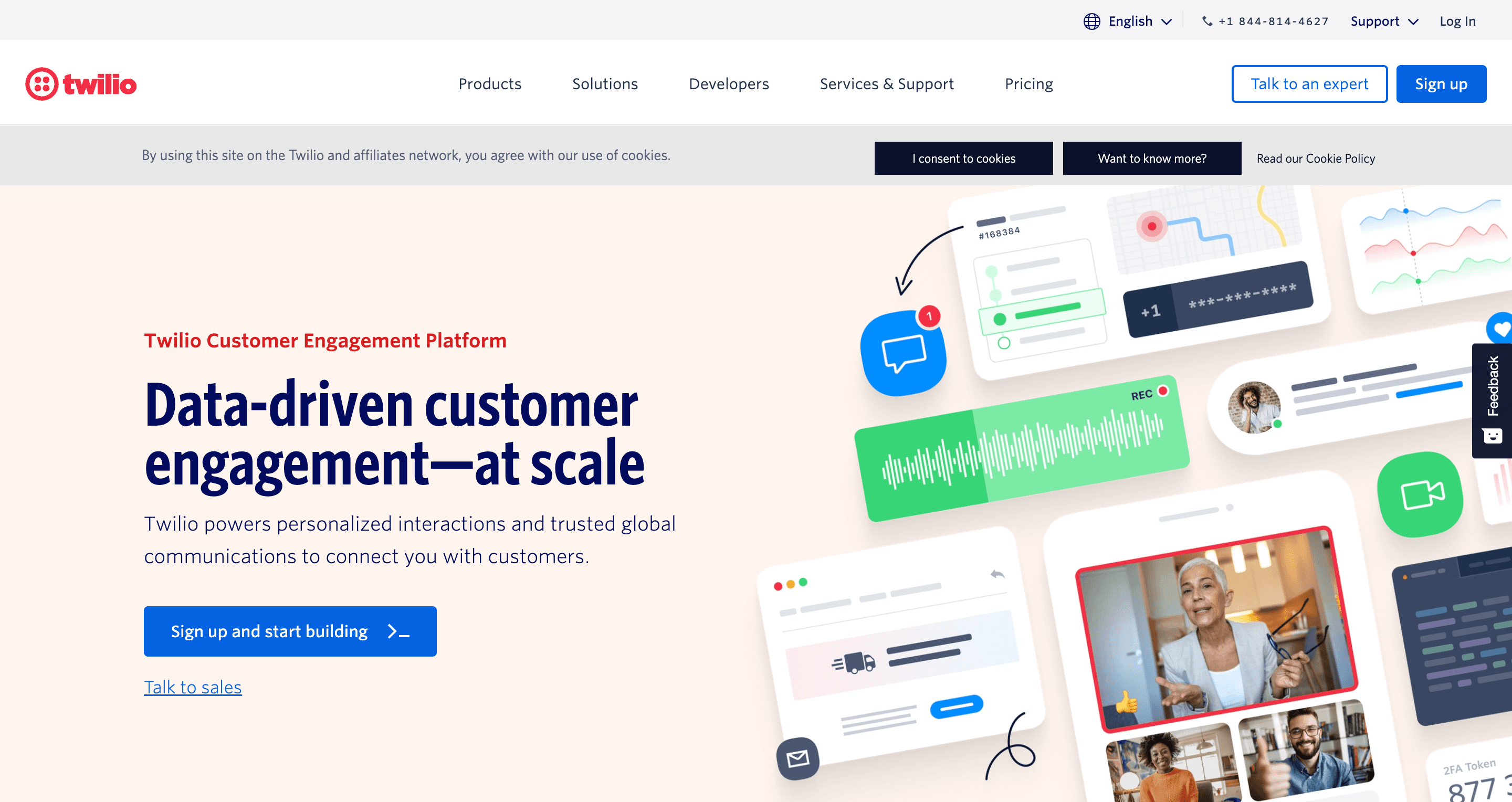
Twilio allows software developers to programmatically make and receive phone calls, send and receive text messages, and perform other communication functions using its web service APIs. The way it works is pretty simple. You just sign up for an account with Twilio, get a phone number, and then use the provided API to integrate calling or texting features into your app.
Schedule automated Twilio reports in minutes using the AgencyAnalytics reporting integration.
WildJar
WildJar is another dynamic call tracking software that tells you exactly where your calls are coming from, who is calling you, and what’s being said–thanks to access to call recordings. This gives business the opportunity to improve their customer services, while allowing agencies to track their campaign success.
Track key call metrics and share data with your clients through automated WildJar reports.
Running Reports with AgencyAnalytics
Once you have the data you need, it's important to aggregate it into reports so you and/or your clients can use that data to make conclusions and grow. You will see "Call Tracking" on the left-hand side of your AgencyAnalytics screen where you can choose the software you're using and then integrate it from there.
Once you are set up, your data will get pulled and you will see the following screens that you can then export into a report each month. For example, in the example below you will see that Facebook is what's bringing in the inquiries. If you're a business that relies on phone calls, putting a "call now" button on Facebook may be a good idea.
Scroll down the page to see exact phone numbers and locations:
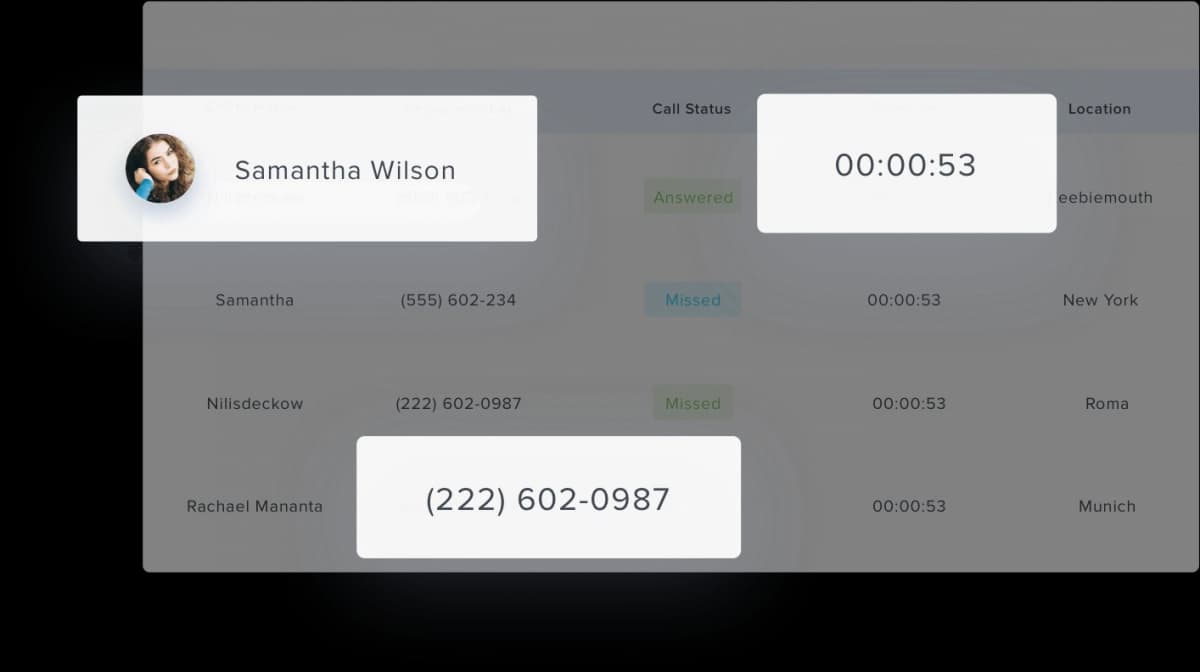
Call-Tracking Metrics to Consider
One big element the best call tracking software programs share is the ability to analyze different metrics to see whether your marketing campaigns are working.
Metrics can also provide other valuable data such as where your leads are coming from, which leads are quality leads, and which are converting. Here are some metrics we recommend taking a look at when launching a call tracking campaign:
The Raw Number of Phone Calls Each Email Generates
This is the most basic raw data, but also some of the most important. You'll want to know exactly how many people are calling you based on the emails you send out so you can see if call tracking is even a beneficial strategy to implement. If no one uses the number then you might want to reconsider your plans as this sends an important message about offline customer behavior.
Which Keywords Drive the Most Phone Calls
It's very important to know which keywords are driving the most phone calls and conversions so you can see how well your PPC campaigns are performing. Once you see which keywords are performing well and which ones aren't you can use these insights to fine-tune your keyword strategy.
Which Marketing Campaigns Drive the Most Phone Calls that Lead to Conversions
For this metric, you should be looking at both online and offline campaigns. Which are driving the most conversions and how are phone calls playing into these results? The most successful campaigns are the ones you should focus your budget and resources on.
Tracking software helps analyze data from offline sources, such as direct mail marketing, in Google Analytics next to your online campaigns.
Which Online Marketing Channels Lead to the Most Offline Calls
By tracking this data, you can get a complete picture of your customer's journey from start to finish. You'll want to know which online marketing channels lead to offline phone calls so you can determine which of your advertising and marketing efforts are effective.
Again, call tracking solutions with multi-channel capabilities are beneficial here because otherwise you'll see the first channel a visitor came through, and you could be missing an important piece of the puzzle.
Source Level Reporting
Source level reporting refers to the geographic location, day, and time where calls originate. Knowing this can also be helpful to fine-tune your campaigns. If most of your callers are stemming from one specific location, consider using location-based advertising in your emails. And if you see that there are some days or times that receive a larger volume of calls than others, you might want to send more emails on those days.
Top KPIs and Metrics | Why It's Important |
|---|---|
1. Total Calls | Helps to measure the overall call volume and assess the effectiveness of campaigns |
2. Missed Calls | Offers insights on potential opportunities lost, helping to improve customer service |
3. Call Duration | Gives an indication of customer engagement and conversation quality |
4. Peak Call Times | Helps in scheduling staff efficiently during high traffic periods |
5. First-time Callers | Helps identify how many new leads are generated by marketing efforts |
6. Repeat Callers | Indicates customer loyalty and satisfaction |
7. Source of Call | Shows which marketing campaign or marketing platform is generating the most calls |
8. Location of Callers | Provides geographical insights for localized marketing strategies |
9. Caller Demographics | Helps in understanding the target audience better |
10. Cost per Call | Measures the efficiency of ad spend in generating calls |
11. Conversion Rate | Shows the percentage of calls that lead to a sale or desired action |
12. Call Recordings | Provides qualitative data for training and understanding customer needs |
13. Average Time before Answer | Helps assess customer service responsiveness |
14. Call Outcome | Offers insights into the effectiveness of call agents |
15. Keyword Tracking | Identifies which keywords are leading to phone calls, optimizing SEO and PPC campaigns |
Looking for an easy way to keep track of all your metrics? Look no further than Agency Analytics
You can also create a call tracking dashboard to track all your metrics. Dashboards also help to automate the process of creating reports since the data shown is displayed in real-time. Client dashboards combine several data sources, saving your time and engaging clients with their data.
No two clients are alike. Some clients want to see rankings, others want to see page views, and others want to see the number of calls from Google My Business. The fact that we can create a dashboard and report template that's unique to our clients is invaluable.
Ruben Roel, President, Investigator Marketing
Conclusion
Call tracking software may help you enhance customer experience, sales, and client retention rates by automating lead nurturing, synchronizing marketing data, and increasing customer support.
Most likely you've set goals for your campaign before launch, and the steps you take to optimize are directly linked to those goals.
However, it doesn't matter how lofty your goals are or how much work you put into personalization if you don't have a good way to measure your efforts and see if you're meeting those goals. This is where good metrics and real time analytics tools come in handy.
Create your own call tracking reports, our multi-client call and web form reporting for agencies. Track and improve campaign performance. Start your free trial today.
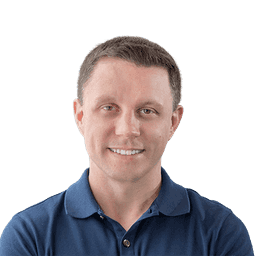
Written by
Joe is the co-founder and CEO of AgencyAnalytics, a marketing reporting platform used by more than 7,000 agencies. With experience creating multiple businesses, he thrives on tackling the challenges of sustainable growth and innovation.
Read more posts by Joe KindnessSee how 7,100+ marketing agencies help clients win
Free 14-day trial. No credit card required.



